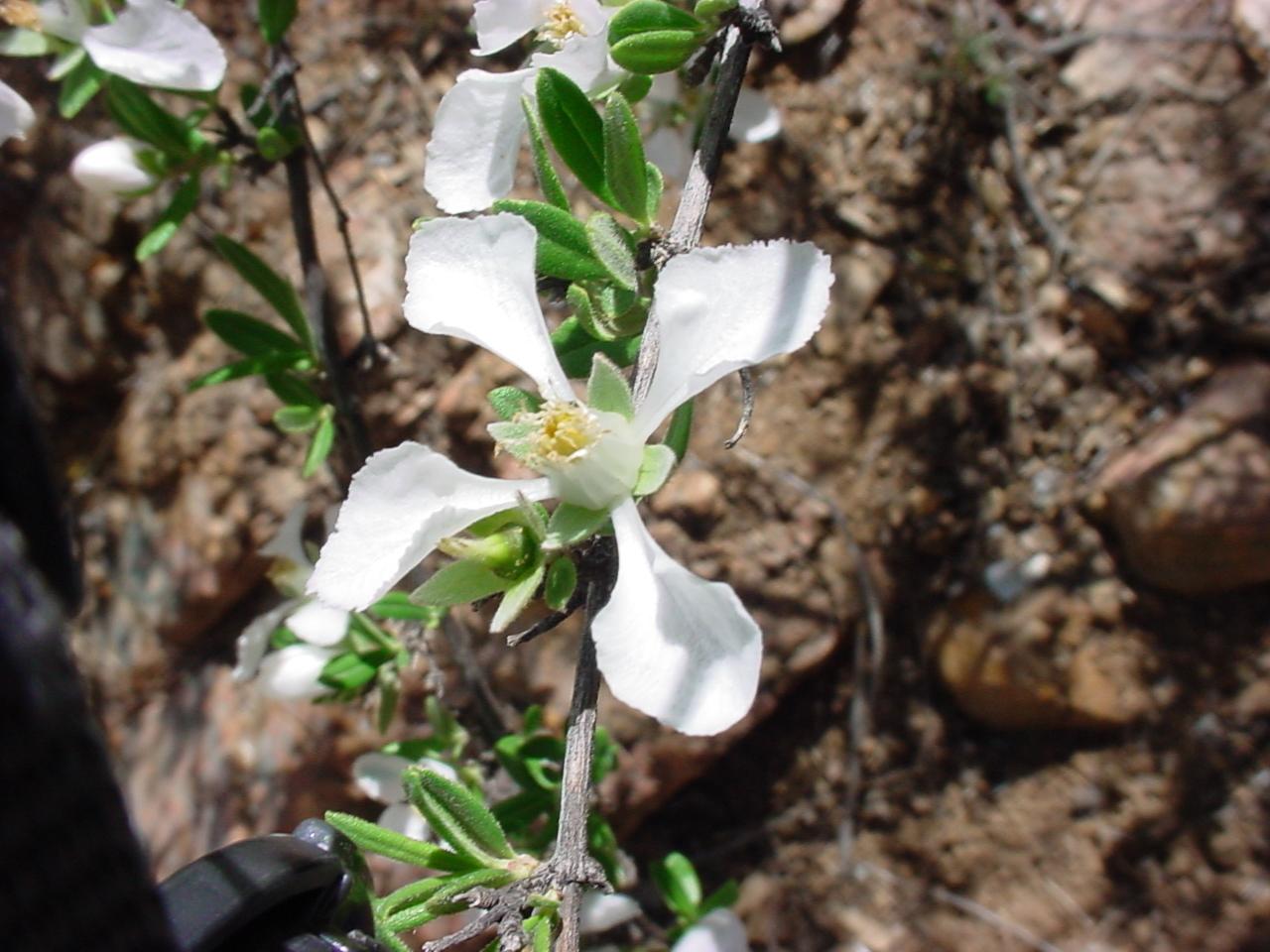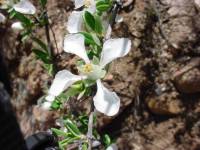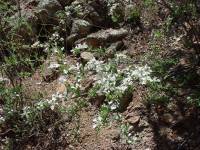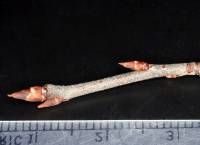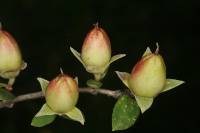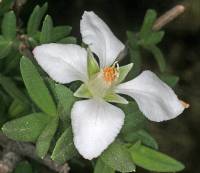usually found growing out of rocky cliffsides. It is a woody shrub with showy bright white flowers. The flowers have tennis racket shaped petals with an irregular fringe. Fendlera rupicola is found at middle to upper elevations. The back of the leaf is whitish tomentose.
Common Name: Wright's fendlerbush
Duration: Perennial
Nativity: Native
Lifeform: Shrub
General: Much branched and brittle stems 1-2.5 m tall, generally thorny.
Leaves: Opposite, short petiolate to nearly sessile and entire, the blades 1-3 nerved, narrowly lanceolate or falcate to ovate, 3-10 mm wide, 1-20 mm long, upper surface pubescent, lower surface a double layer of minute frizzly or crinkled hairs, overlain by coarser appressed or ascending hairs.
Flowers: Showy and in clusters of 2 or 3, pedicels 2-25 mm long, about 4 cm across extended petals, the hypanthium narrowly to broadly turbinate, 4 sepals, dentate to narrowly triangular, 4 petals, white or tinged with pink, clawed the bases broadly ovate to rhombic and with erose margins, usually 8 stamens, the filaments flattened.
Fruits: Septicidal capsule with relatively few seeds in each cell.
Ecology: Found on rocky slopes, often in the transition zones from grassland to oak-pine woodlands and generally in canyons from 3,000-7,000 ft (914-2134 m), flowers April-August.
Distribution: Ranges from northwestern Arizona through southeastern Arizona in the mid elevation range across southwestern New Mexico and into west Texas, along with a few disjunct populations in northern New Mexico and extreme southern Colorado.
Notes: Distinguished from other Fendlera by the undersurfaces of the leaves having two layers of first a minute frizzly and crinkled hairs overlain by a more coarse appressed and ascending hairs (Turner 2001). This is distinguished from F. rupicola whose leaves have glabrous upper surfaces and sparsely strigose undersides. Also sympatric with F. falcata but usually at lower elevations, distinguishing between the two is done by the single layer of coarse, appressed to ascending hairs in F. falcata as opposed to the two layers in F. wrightii.
Ethnobotany: Unknown
Etymology: Fendlera is named for Augustus Fendler (1813-1883) a German plant collector who worked for Asa Gray and George Engelmann, while wrightii refers to refers to Charles Wright (1811-1885), a naturalist who collected specimens for Harvard.
Synonyms: Fendlera rupicola var. wrightii
Editor: SBuckley 2011


